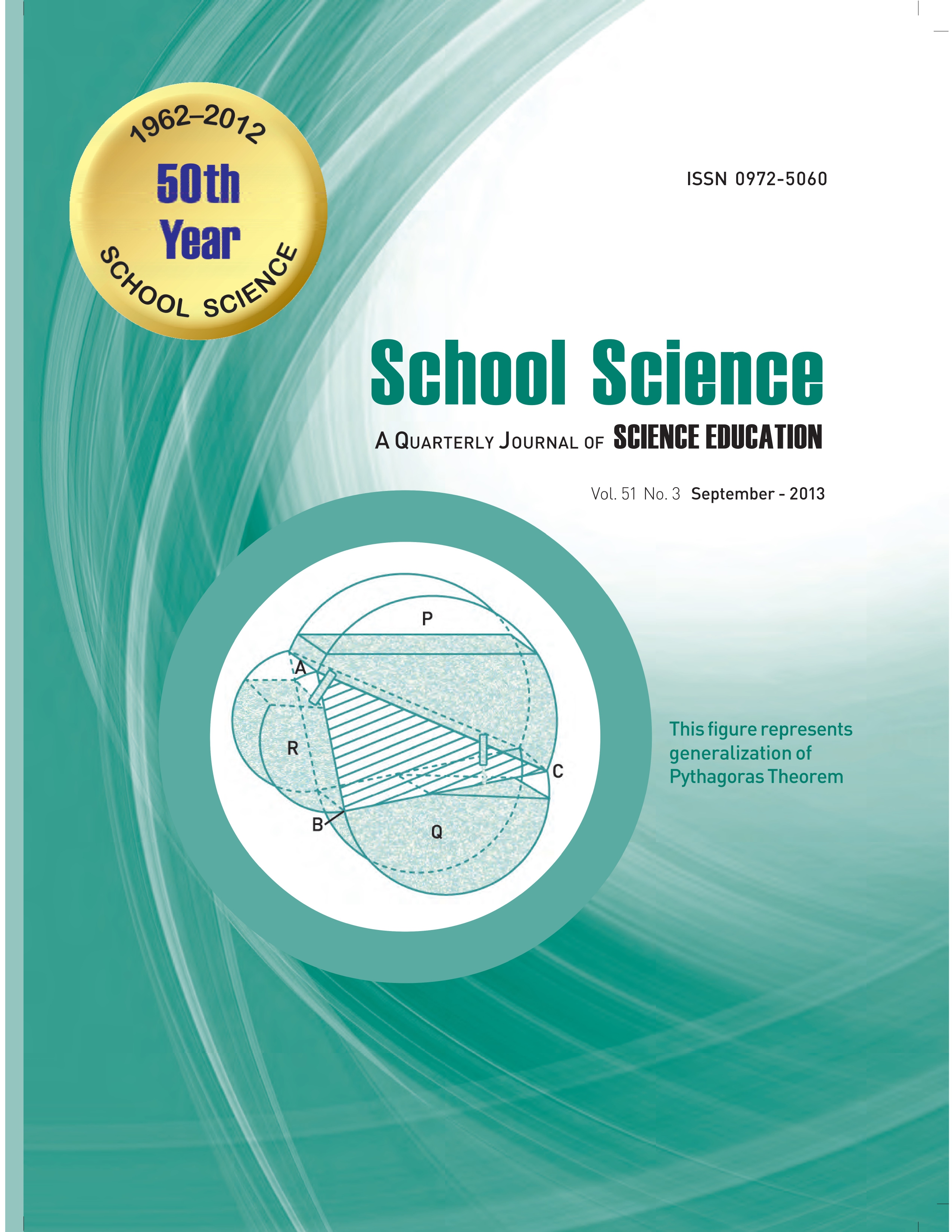
Published 2013-09-30
Keywords
- Euclidean Geometry Theorem,
- Indian text, Apastamba,
- Babylonians
How to Cite
Abstract
Everybody, perhaps, is familiar with the extremely important Euclidean Geometry Theorem: “in any right angle triangle, the square of the hypotenuse is equal to the sum of the squares of other two sides” (Fig.1). This theorem is associated with the Greek Philosopher and Mathematician, Pythagoras who was born in about 580 B.C. in Samos of Greece and later settled in Italy. The ancient Indian Baudhayan’s Sulba Sutras of 600 B.C. also mentions a similar theorem but in different manner ‘dirghacaturasrasyaksnayarajjuh pars vamani tiryanmanica yatprthgbhutekkurutastadubhayam karoti’ which means – ‘The diagonal of a rectangle produces by itself both (the areas) produced separately by its two sides’ (Fig.2). This information was also characterized by ‘knowledge of plane figures’ in another ancient Indian text, Apastamba. Therefore, the Pythagoras theorem is nothing but the same as described in Sulba Sutras because, the diagonal AC of rectangle ABCD is the hypotenuse of right angle triangle ABC. It is believed that the theorem was also known to Babylonians a thousand years before Pythagoras in the form of calculating the diagonal of a square. But they associated numbers with lines. Pythagoras was, perhaps, the first to find a proof of the theorem considering the areas of the squares on the sides of a right angle triangle
